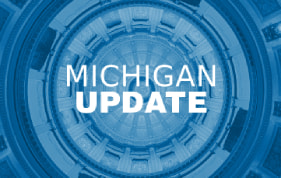The successful operation of the health insurance marketplaces created by the Affordable Care Act remains a key federal and state policy priority and an important business opportunity for managed care organizations (MCOs). At Health Management Associates (HMA), we are prepared to support both states and MCOs to achieve success in the operation of and participation in the marketplaces as these markets continue to evolve in the coming months and years.
Our team is made up of former state-based and federal marketplace leaders, insurance commissioners, state Medicaid directors, other senior government officials, payer executives, and provider leaders—meaning that we have the first-hand experience to navigate the complexities of marketplace establishment, operations, and participation toward successful outcomes. Our consultants have had expansive experience in this market since its inception. We have worked as and for federal and state regulators, enabling us to understand regulator goals. Additionally, we have worked for and with local, regional, and national MCOs on market entry strategy and/or profitability strategy. Our team has looked at the same problems from many angles and has the broadest historical perspective on the challenges and opportunities in this market.
CONSIDERATIONS FOR STATES
For states, operating a state-based marketplace (SBM) that flexibly meets the health coverage needs of the population in an efficient and responsive way is a common and critical goal. HMA understands the importance of establishing and continually operating a strong and lasting SBM capable of weathering and protecting against current and future threats to access and affordability. Key SBM policy outcomes include:
Local Control and Better Coordination
SBMs can increase enrollment and reduce gaps in coverage for families through closer alignment with the Medicaid program, customer-centric policies and procedures, and local, tailored engagement and outreach.
Lower Costs and Improved Consumer Protections
SBMs can establish plan design standards, coverage requirements, and consumer protections to improve choice and competition, lower out-of-pocket costs, and protect access to the affordable care individuals need and deserve.
Universal Coverage
Through innovative enrollment initiatives, federal waivers, and affordability programs, SBMs can be a catalyst for additional reforms to put the state on the pathway to universal coverage.
To be able to successfully accomplish the policy aims outlined above, states must excel across and within a range of strategic and operational areas including: organizational development and implementation, governance and project management, vendor procurement and oversight, strategic policy development, maximizing federal funding and financial management, federal compliance, stakeholder engagement, and communications and training. HMA can support states in all these areas with services that enable operations, regulatory compliance, strategy, and policy advancement.
CONSIDERATIONS FOR MCOS
For MCOs, the marketplace represents a key business opportunity where existing capabilities can be leveraged as part of a successful growth strategy. With our extensive regulatory expertise and expansive state market knowledge, HMA understands that customized support is necessary to allow MCOs to succeed in the marketplace as either a new market entrant or an existing participant. For MCOs, the marketplace has the following features:
A Highly Regulated Environment
At the federal and state levels, the marketplace environment has strict standards in terms of plan design, rating rules, network adequacy, marketing practices, producer (broker and agent) activities, and marketing practices.
Significant Public Funding
As a result of the marketplace premium tax credits, most marketplace consumers qualify and as a result, significant public funding is involved.
An Evolving Market
The end of the Medicaid continuous enrollment condition as of March 31, 2023, which has been in effect throughout the Coronavirus Disease 2019 Public Health Emergency, makes providing coverage in the marketplace even more critical—as millions of individuals transition to this market after losing Medicaid coverage.
How HMA can help
HMA can support clients every step of the way in the planning and execution of efforts to participate in and optimize performance for the marketplace. To achieve and maintain success in the marketplace, MCOs must excel across strategic, operational, and analytical areas including:
Market analysis and feasibility
Operational gap analysis
Product management scoping
Vendor procurement
Regulatory filings development and implementation
Actuarial analytics
Provider contract reimbursement analysis, and
Network development
HMA can bring to bear a comprehensive continuum of services to solve your most pressing marketplace challenges.
If you have questions about how HMA can support your state or MCO related to the marketplace, please contact Zach Sherman, managing director or Patrick Tigue, managing director.
Contact our experts:

Zach Sherman
Managing Director






